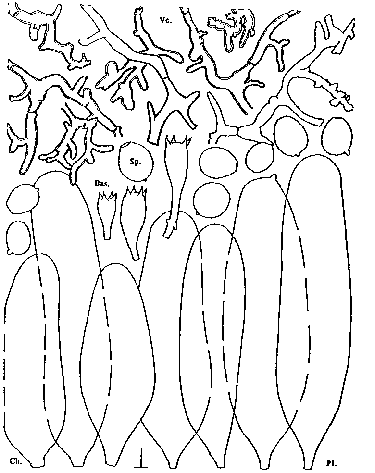Macroscopic features |
Pileus 8-10 x 4-5 mm when still closed, up to 20 mm when expanded, first cylindrical, ellipsoid, ovoid or somewhat conical, whitish with ochre centre. Veil breaking up in felty, ochre scales and becoming paler. Lamellae, L = 34-46, l = 0-3, rather crowded, free, first white, then grey to blackish. Stipe up to 60 x 1-1.5 mm, white, greyish white, somewhat floccose at clavate base. |
Microscopic features |
Spores [60,3,3] 5.0-7.2 x 4.5-6.2 µm, short ovoid or ovoid, truncate, medium red-brown, with central, rarely slightly eccentric, 1.3-1.5 µm wide germ pore; Q = 1.00-1.30, av. Q = 1.10-1.20; av. L = 5.9-6.3, av. B = 5.4 µm. Basidia 18-44 x 8-11 µm, 4-spored, surrounded by (3-)4-6(-7) pseudoparaphyses. Pleurocystidia 80-180 x 25-40(-60) µm, (sub)cylindrical, oblong or utriform. Cheilocystidia 40-120 x 18-32(-40) µm, similar to pleurocystidia. Elements of veil thick-walled, strongly multiple-branched and diverticulate, in general with rounded protuberances, 3-7(-10) µm wide; walls up to 1 µm thick, pale brown. Clamp-connections present. |
Habitat & distribution |
In small groups, on grasses and herbs. Rare, recorded from Scotland and the Netherlands. |
Remarks |
Coprinus xantholepis differs from C. phaeosporus, C. pseudofriesii and C. tigrinellus particularly by the larger and broader cystidia. |

[Copyright © by ]